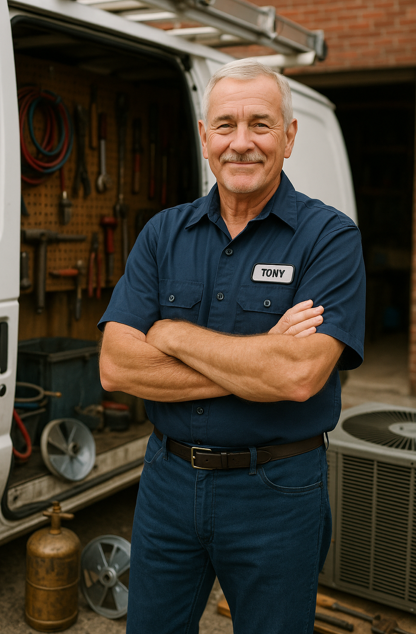Hey there, HVAC enthusiasts and homeowners alike! Today, we’re diving into the world of heavy-duty air conditioning — those big, powerful systems like the 9 ton air conditioner and the 14 ton AC unit. Whether you’ve got a sprawling commercial space, a massive home, or a tough-to-cool two-story house, understanding these systems is crucial for making a smart choice.
What Does “Tonnage” Actually Mean?
First off, let’s clear up a common misconception. When HVAC pros talk about “tons,” they’re not weighing the unit. Instead, a “ton” refers to the cooling capacity — specifically, 12,000 BTUs per hour. So, a 9 ton AC unit delivers about 108,000 BTUs per hour. That’s serious cooling power, enough for very large spaces.
If you want to estimate what size system your home needs, a rough rule of thumb is about 20 BTUs per square foot. For example, a 6,000-square-foot home could require around 120,000 BTUs — right in the ballpark for a 9 ton air conditioner. For a more precise calculation, online tools like the Manual J sizing calculators offered by Remodeling Calculator are a great place to start.
What Is “Air Climatisé Centrale” and Why Does It Matter?
You might have heard the term air climatisé centrale, which is just the French term for central air conditioning. This system cools your entire home through ductwork, distributing chilled air evenly and discreetly. Compared to window units or mini-splits, central air systems provide a uniform, clean look and can be more efficient for whole-house cooling.
For large two-story homes or commercial buildings, a well-designed air climatisé centrale system is often the best choice for comfort and energy savings.
When Do You Need a 9 Ton AC Unit?
Bigger Homes or Commercial Spaces
A 9 ton AC unit is definitely not your average home’s cooling solution. It’s designed for large residences, warehouses, commercial spaces, or buildings with challenging cooling needs. For example, if you have a two-story house with 5,000+ square feet, especially with high ceilings or lots of windows, a 3 or 4 ton system just won’t cut it.
Getting the right size is key. Oversizing wastes money and energy, while undersizing leads to discomfort and wear and tear. You can learn more about sizing and cost considerations from trusted HVAC resources like This Old House that offer detailed guidance on finding the right system size for your home.
Budget Considerations
Cost-wise, a 3-ton central air installation might run between $3,300 and $7,800 depending on brand and complexity. Jumping to a 9 ton system, you’re looking at $20,000 or more, including installation and equipment costs. That’s why it’s vital to work with professionals for an accurate Manual J calculation to avoid overpaying for a system that’s too big.
What About a 14 Ton AC Unit?
A 14 ton AC unit is a beast meant for very large commercial buildings or multi-unit residential complexes. It’s less common for homes but necessary in facilities with vast spaces, high heat loads, or stringent cooling requirements.
Planning for such systems happens early in the design process because ductwork, power supply, and load calculations have to be spot on. If you’re curious about large-scale HVAC systems and pricing, the team at HVAC.com provides solid insights into costs and installation factors.
Finding the Best Air Conditioner for a Two-Story House
Most two-story homes generally require somewhere between 3 and 5 tons of cooling capacity, but it’s never one-size-fits-all. The second floor often gets hotter because heat rises, so proper zoning or multi-speed systems can make a huge difference.
Many experts recommend a combination of a central air system for overall coverage and supplementary solutions like ductless mini-splits for the upper floors. This approach balances comfort and energy efficiency without overspending.
Resources like Energy.gov provide practical advice on how to size and choose the best AC system for your home’s unique layout.
Why the Right System Matters — And How the Goodman 3 Ton 14.5 SEER2 R-32 Bundle Fits In
While today’s focus has been on larger tonnage units, it’s important to note that the right system is all about balance. For many homes, the Goodman 3 Ton 14.5 SEER2 R-32 bundle is a great example of an efficiently sized, environmentally conscious system offering solid cooling with R-32 refrigerant, which is better for the environment.
Oversizing your unit—like jumping to a 9 ton or 14 ton unit without need—can cause short cycling and high energy bills. Proper load calculation and professional installation make all the difference.
Tony’s Tips for Handling Big HVAC Systems
-
Always start with a Manual J load calculation to get your precise cooling requirements.
-
Don’t oversize — it’s tempting to “go big,” but bigger isn’t always better.
-
Look for systems with higher SEER ratings (14.5 SEER2 or above) to maximize efficiency.
-
Consider refrigerants like R-32 that offer a lower environmental impact.
-
Installation quality matters just as much as equipment quality — hire certified HVAC pros.
-
For large homes or commercial spaces, explore zoning or VRF (Variable Refrigerant Flow) systems for flexibility and savings.
Wrapping Up
Whether you’re eyeing a 9 ton air conditioner or a 14 ton AC unit, or simply wondering what the best air conditioner for a 2 story house looks like, sizing and proper design are critical. Big cooling power isn’t just about being the biggest — it’s about matching your home’s needs precisely to ensure comfort, efficiency, and longevity.
If you want to check out an example of a smart, well-balanced system, the Goodman 3 Ton 14.5 SEER2 R-32 bundle is a solid option to consider.
Stay cool, stay smart, and as always — do it Tony Marino style.







